Ditapis dengan
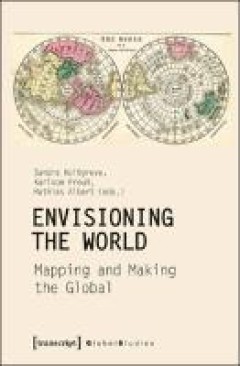
E-Book Envisioning the World: Mapping and Making the Global
The "global" is permanently made and remade by how it is envisioned in political projects, in language, and in literature. Through a range of case studies, this book shows how practices of referring to the world actually constitute the global in its many facets. It aims to provide a sense in readers of how the global is not something »out there«, but that it is embedded in a wide range of the…
- Edisi
- -
- ISBN/ISSN
- 9783839455296
- Deskripsi Fisik
- 264 halaman
- Judul Seri
- -
- No. Panggil
- 301 HOL e
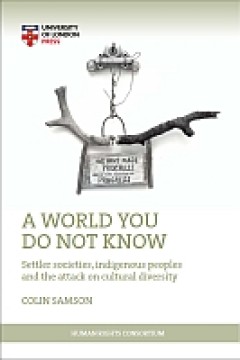
E-Book A World You Do Not Know: Settler Societies, Indigenous Peoples and the…
A World You Do Not Know explores the wilful ignorance demonstrated by North America’s settlers in establishing their societies on lands already occupied by indigenous nations. Using the Innu of Labrador-Quebec as one powerful contemporary example, Colin Samson shows how the processes of displacement and assimilation today resemble those of the 19th century as the state and corporations scramb…
- Edisi
- -
- ISBN/ISSN
- 9781912250394
- Deskripsi Fisik
- 284 halaman
- Judul Seri
- -
- No. Panggil
- 301 SAM a
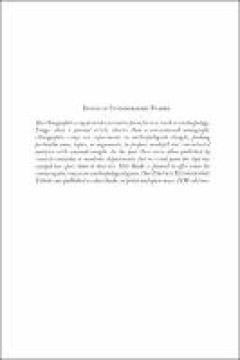
E-Book How Is It Between Us? : Relational Ethics and Care for the World
A new theory of relational ethics that tackles contemporary issues. In How Is It Between Us?, Jarrett Zigon puts anthropology and phenomenological hermeneutics in conversation to develop a new theory of relational ethics. This relational ethics takes place in the between, the interaction not just between people, but all existents. Importantly, this theory is utilized as a framework for consider…
- Edisi
- -
- ISBN/ISSN
- 9781914363054
- Deskripsi Fisik
- 150 halaman
- Judul Seri
- -
- No. Panggil
- 301 ZIG h
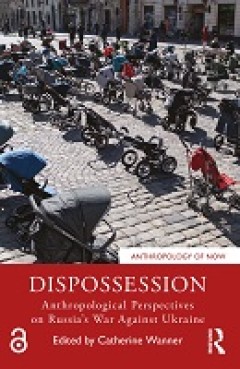
E-Book Dispossession: Anthropological Perspectives on Russia’s War Against …
This volume examines Russia’s war on Ukraine. Scholars who have lived through the Russian invasion or who have conducted ethnographic research in the region for decades provide timely analysis of a war that will leave a lasting mark on the twenty-first century. Using the concept of dispossession, this volume showcases some of the novel ways violence operates in the Russian-Ukrainian war and t…
- Edisi
- -
- ISBN/ISSN
- 9781032466224
- Deskripsi Fisik
- 271 halaman
- Judul Seri
- -
- No. Panggil
- 301 WAN d
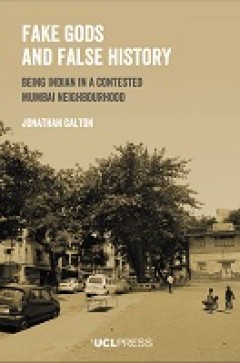
E-Book Fake Gods and False History: Being Indian in a Contested Mumbai Neighb…
n an age where history is a global battleground and fake news proliferates, culture wars are being waged across India over its future – majoritarian or inclusive, neoliberal or socialist, religious or secular? Fake Gods and False History takes us to the BDD Chawls, a central Mumbai neighbourhood of tenement blocks (chawls) on the brink of a controversial redevelopment. Throughout the book, …
- Edisi
- -
- ISBN/ISSN
- 9781800085800
- Deskripsi Fisik
- 237 halaman
- Judul Seri
- -
- No. Panggil
- 305.8 GAL f
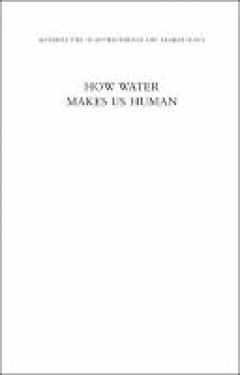
E-Book How Water Makes Us Human
This book is about how water becomes people – or, put another way, how people and water flow together and shape each other. While the focus of the book is on the relationships held between water and people, it also has a broader message about human relationships with the environment generally – a message that illustrates not only that people are existentially entangled with the material wor…
- Edisi
- -
- ISBN/ISSN
- 9781786834119
- Deskripsi Fisik
- 192 halaman
- Judul Seri
- -
- No. Panggil
- 301
E-book Exhibiting Creative Geographies : Bringing Research Findings to Life
This book makes a case for art as geography. In doing so, it situates itself at a certain juncture—the translation of geographical knowledge through art. This juncture is blurry, because in the making of art to trans-late knowledge, new knowledge is created. For this very reason, this book won’t perpetuate a false distinction between knowledge creation and kn…
- Edisi
- -
- ISBN/ISSN
- 9789811967528
- Deskripsi Fisik
- 116 hlm
- Judul Seri
- -
- No. Panggil
- 301 BOY e
E-book Cultural Heritage Preservation : The Past, the Present and the Future
Heritage comes in many shapes—in tangible forms such as sites, buildings, landscapes, or as intangibles, like memories, emotions, values and customs—as does the use of heritage, ranging from the purpose of building nations to marketing places. Heritage usually represents a phenomenon within a traditional historical discourse but have lately, more and more, come to take in peripheral appeara…
- Edisi
- -
- ISBN/ISSN
- 9789187045950
- Deskripsi Fisik
- 158 hlm
- Judul Seri
- -
- No. Panggil
- 301 NIL c
E-book The World as Abyss : The Caribbean and Critical Thought in the Anthrop…
In 1939 Martinican writer Aimé Césaire first published his book length poem variously translated as Notebook of a Return to My Native Land, Return to My Native Land, or Journal of a Homecom-ing, in which this epigraph appears. As the colonial powers were taking the world into an era of mass destruction, Césaire drew upon a Caribbean imaginary to counterpose to th…
- Edisi
- -
- ISBN/ISSN
- 9781915445315
- Deskripsi Fisik
- 123 hlm
- Judul Seri
- -
- No. Panggil
- 301 PUG t
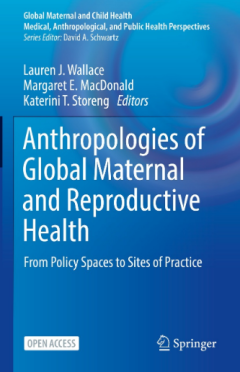
E-book Anthropologies of Global Maternal and Reproductive Health: From Policy…
This open access edited book brings together new research on the mechanisms by which maternal and reproductive health policies are formed and implemented in diverse locales around the world, from global policy spaces to sites of practice. The authors – both internationally respected anthropologists and new voices – demonstrate the value of ethnography and the utility of reproduction as a le…
- Edisi
- -
- ISBN/ISSN
- 9783030845148
- Deskripsi Fisik
- 225 hlm
- Judul Seri
- -
- No. Panggil
- 362.1 WAL a
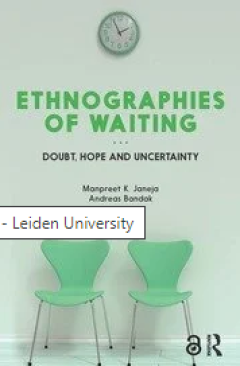
E-book Ethnographies of Waiting : Doubt, Hope and Uncertainty
- Edisi
- -
- ISBN/ISSN
- 9781000183764
- Deskripsi Fisik
- 212 hlm
- Judul Seri
- -
- No. Panggil
- 305.8 JAN e
- Edisi
- -
- ISBN/ISSN
- 9781000183764
- Deskripsi Fisik
- 212 hlm
- Judul Seri
- -
- No. Panggil
- 305.8 JAN e
E-book Culture Management : Strategy and marketing aspects
Any business entity which wishes to maintain and strengthen its position in the market must adapt to changing market conditions and the requirements and needs of its customers. This applies to all sectors of the economy, including business entities in the cultural sector, such as cultural institutions. For over twenty years, we have been able to observe dynamic develop…
- Edisi
- -
- ISBN/ISSN
- 9783832543785
- Deskripsi Fisik
- 196 hlm
- Judul Seri
- -
- No. Panggil
- 301 WRO c
E-book Hyposubjects : On Becoming Human
Stuff is happening. The book Hyperobjects is now in a way irrele-vant—everyone knows, everyone intuitively feels (which is much more important) what a hyperobject is. Coronavirus is everywhere. You can’t see it. It operates on all kinds of different scales—terrify-ing interpersonally or if you’re being forced back to work or school; weirdly amazing…
- Edisi
- -
- ISBN/ISSN
- 9781785420979
- Deskripsi Fisik
- 96 hlm
- Judul Seri
- -
- No. Panggil
- 300.1 MOR h
E-book Forensis : The Architecture of Public Truth
Considering the wide range of projects, scales, issues, and epistemic frames that the project ended up traversing, it is important to mention that Forensic Architecture had a modest start: it was inspired by the unassuming work of building surveyors—the careful and systemic analysis of the structural and infrastructural conditions of a building.17 Building surveyors understand a crucial thing…
- Edisi
- -
- ISBN/ISSN
- 9783956790119
- Deskripsi Fisik
- 390 hlm
- Judul Seri
- -
- No. Panggil
- 599.9 COL f
 Karya Umum
Karya Umum  Filsafat
Filsafat  Agama
Agama  Ilmu-ilmu Sosial
Ilmu-ilmu Sosial  Bahasa
Bahasa  Ilmu-ilmu Murni
Ilmu-ilmu Murni  Ilmu-ilmu Terapan
Ilmu-ilmu Terapan  Kesenian, Hiburan, dan Olahraga
Kesenian, Hiburan, dan Olahraga  Kesusastraan
Kesusastraan  Geografi dan Sejarah
Geografi dan Sejarah